No year ends without its farewells. In 2009, the world of motorcycling bid goodbye to friends old and, often more tragically, young. Some were famous; others were not. The common bonds are that there were places for them on or near motorcycles, and they will be missed. What follows is a board sampling of some of those people that left is in this last turn of the calendar. We could not include everyone—our sincere apologies to those who are not mentioned here—but we did try to choose broadly. What follows are brief remembrances of the lives they lived…
- - -
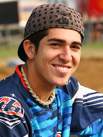
Oscar Diaz
We were all reminded just how cruel the world can be, and violent, on September 19. Oscar Diaz was a promising young man who also happened to be a gifted rider. The Costa Rican and his father had moved to Florida in pursuit of the American motocross dream, and Oscar soon became a favorite on the track and in the pits. He loved working with kids, and he had a smile for everyone. So it made no sense that he would be gunned down after winning a race in Guatemala, the victim of gangsters who were after someone else in the car. His death was a crushing blow to the Florida motocross community, as well as Costa Rica, here virtually every person affiliated turned out for his funeral. It was a sad parade of cars and truck and motorcycles that took Oscar Diaz to his grave in order to say goodbye. The boy’s vast potential as a human being, let alone a dirt bike rider, made this an unthinkable tragedy on every level. Oscar Diaz was 21 years old.
- - -

Kat Spann
Kat Spann was the grand dame of Texas motocross. Kat was omnipresent at all of the big amateur races, shooting photos and writing down the words for he personal publication, Tex-MX, as well as Cycle News. She was into desktop publishing long before the The Racing Papers, Playgrounds and Amateur MXs of the business came along and outpaced her newspaper by going national in scope. She tried to keep up by re-branding her paper as Southern Dirt Bike, but then decided to close up shop and focus on her grand kids. When she was on the beat, she was a strong advocate for the riders and their families, calling everything as she saw it, sugar-coating nothing, and becoming a thorn in the side of some promoters and track owners. Her nightly jello-shot parties up on Stagecoach Hill at Loretta Lynn’s were a ritual, bringing together the parents and powers-that-be for amateur motocross for epic bench racing sessions, using her charisma and charm to help make changes for the betterment of the sport. A few years ago she began her battle with cancer, just as she was setting up for a life of retirement with her husband Gregory in Costa Rica. It went back and forth, as she and her family fought bravely. Kat Spann passed on August 16 in her beloved Texas.
- - -

Stephan Mace
Before he joined the U.S. Army, Stephan Mace was an accomplished motocross racer. Raised in Virginia, he grew up doing all of the big amateur nationals. He was ranked nationally as early as the age of nine, when he raced his Cobra minicycle. As he grew older, he got into other sports like basketball and football, but he never left motocross completely.
Army Specialist Mace was killed in action near Kamdesh, northeast Afghanistan, along with seven other fellow soldiers, when several hundred Taliban fighters armed with automatic rifles and rocket-propelled grenades attacked and nearly overran Combat Outpost Keating, according to the U.S. military. He was buried with full military honors in Arlington National Cemetery. Stephan Mace was 21.
The AHRMA North Atlantic division is dedicating its 2010 season to this brave, young, fallen soldier. “We are also going to produce a decal for our bikes, or perhaps helmet to honor him,” said his fellow rider Ed Day. “We should all remember, and thank, the men and women in the armed forces for their constant sacrifices for us.”
- - -

Jeremy Lusk
There have been two truly momentous, game-changing events in the last decade in the freestyle motocross movement. The first was Carey Hart’s back-flip breakthrough in 2000. The second was Jeremy Lusk’s tragic death in February as a result of missing on a back-flip variation at a February event in Costa Rica. The horrific crash, which lives on the internet, shocked the freestyle world at its very core. One of the best riders of all had been lost as a result of trying to add on variations to the already risky trick. He was 24 years old when he died in the Rafael Ángel Calderón Guardia Hospital in San José, Costa Rica.
Soon the original rule-breakers — Lusk’s cohorts in the Metal Mulisha — helped form the AFMXA (American Freestyle Motocross Association) to try to improve their own safety, and the summer’s X Games seemed to have a dark cloud over it, as the jumpers in the Big Trick contest crashed out with alarming frequency. Even by the end of the year, the crash was on everyone’s minds: It was the only motorcycle-related event to make ESPN The Magazine’s 100 Biggest Stories of 2009 (it as #42).
The effects of Jeremy Lusk’s death can be seen in the actions of event promoters, as Feld has stepped away from promoting who-will-go-bigger contests in favor of a slick, choreographed show called Nuclear Cowboyz. The Dew Action Sports Tour has trimmed back its contests as well. The idea of seeing another rider laying motionless at the base of a ramp, on live television, is not something anyone wants to ever see again.
- - -
I will forever hold a debt of gratitude to Bob Lenk. In February of 1993 my friend Todd Hicks and I were on a week-long road trip, going from the Atlanta SX to the Gainesville outdoor national opener. The morning after the SX, we the way we stopped at a national enduro I was covering for Cycle News. That’s where I saw Bob, the one-man Motoworld TV camera crew, trying to interview Randy Hawkins after the race by holding the camera on his right shoulder and also a microphone stretched out from his left. I listened for a moment and then said, “Bob, here, let me hold the mic for you.” He thanked and stepped back to a better angle of Hawkins, and I proceeded to ask Hawkins a few questions, mic in one hand, tape recorder in the other, while Lenk kept his camera on. I did a few more for him before Todd and I continued our adventure
Three months later I got a phone call from a man named Dennis Torres. He told me he was shooting the upcoming weekend’s Southwick National and wanted to know if I could fill in as the pit reporter. I told him I was the wrong guy, because I had never done such a thing. He said, “Yes you have, Bob Lenk gave me your tape from that enduro in Georgia.” It was Bob who brought my name up, told Torres I could get the job, and just like that I was a television analyst for ESPN, and it was from that high-profile platform I was able to get I was able to get a little newspaper called Racer X off the ground.
Bob Lenk was always on the beat, whether he was doing his early gig as a Cycle News reporter, or shooting for Lou Seals’ seminal TV show Motoworld, hustling to get the shots, the words, and the joy of motorcycling. He put in endless hours lugging those big TV cameras around. He was the picture of health, but for one small caveat: He was a heavy smoker. Bob Lenk succumbed to esophogal cancer last Friday morning.
- - -
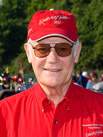
Mike Traynor
Mike Traynor was all about helping the kids. As the co-founder of Ride for Kids and the Pediatric Brain Tumor Foundation, Traynor and his wife Diane spent much of their lives working to raise funds and awareness of children and their families that suffered. Over the years they combined their passion for motorcycling with their compassion for sick kids. With the help of American Honda he helped organize some 400 riding events, raising close to $50 million through his efforts, as well as bringing the plight of these children to light for countless people. Traynor’s efforts also helped establish the Central Brain Tumor Registry in this country, as well as Neuro-Oncology, the premier international publication of the Society of Neuro-Oncology. Mike Traynor died in September after a brief illness. He was 70 years old.
- - -
Troy Blake was a promising rider from Arizona who got his shot at the top in the early eighties, parlaying a solid minicycle career into a shot at a factory job as soon as he turned pro. Tanner Krahenbuhl was an amateur prospect from California who was 16 years old, hoping to find himself some kind of shot at making it to the next level. Unfortunately, Blake could not find the right program for himself once he joined a Yamaha factory team that included such motocross talent as Bob “Hurricane” Hannah, Broc Glover, Mike Bell and more. He would soon quit following the pro tour and went into the motorcycle dealership business with his family, staying near the sport until an illness ended his life prematurely a few months ago. As for Krahenbuhl, we’ll never know what might have come of his racing dreams; his life ended tragically when the motorhome he was riding in lost its brakes as it come down the steep decline from the Powder Mountain Motocross race in Utah in late August and crashed into a rocky outcrop. Tanner Krahenbuhl was 16 years old.
- - -
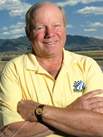
Larry Miller
There were many impressive properties in Larry H. Miller’s $3 billion portfolio—the NBA’s Utah Jazz, Minor League Baseball’s Salt Lake Bees, Energy Solutions Arena, plus radio and television stations, catering companies, auto dealerships, retail stores, movie theaters, and more—but the one that was closest to the Utah entrepreneur’s heart was arguably Miller Motorsports Park. Born out of Miller’s lifelong love of automobiles, the Alan Wilson-designed circuit (located just outside Salt Lake in Tooele) was initially intended to be a personal playground for Miller and his Cobras, but as amenities were added to the plan, its construction budget grew from $5 million to $85 million. When construction was completed in 2006, the track’s entertaining layout and high safety standards quickly made it popular among motorcycle road racers and fans of the sport. The track hosted its first AMA Pro national that same year and added a World Superbike round in 2008, confirming its world-class status.
A dedicated philanthropist—Utah Governor Jon Huntsman said, “We all have been made better by [Larry’s] extraordinary life”—Miller in 1995 formed Larry H. Miller Charities, whose mission is to “give back to our communities by focusing our united service and corporate giving on youth and children with an emphasis on health and education.” He passed away in February, just a couple of months before his track hosted its second World SBK round.
- - -

John Gallagher
The competitive spirit could not be extinguished from John Gallagher Sr. Racing out of Ohio, he started following the Grand National Cross Country Series long before it was even called the GNCC Series, competing in the 100-Miler Series, as they used to be called, on bikes. Later he took up ATVs, but he often raced both just to get maximum riding time in. His son, John Jr., took up racing, winning a GNCC Youth Championship and becoming one of today’s top GNCC ATV pros.
John Sr. raced more GNCC races than anyone ever, starting all the way back in the mid-1970s and never skipping a season. He raced at every venue the GNCC Series ever visited—an accomplishment only he can claim. He won the 40+ GNCC Title past his 50th birthday, and won the 50+ crown past age 60. His will to win never faded. A few times each year, he would call me on the phone to state his case on something—why his class should start on the front row, why we should start a 60+ class for ATV riders, whatever. He was a tough, stubborn old racer and really quite fun to spar with. He wasn’t afraid to tell it as he saw it, and when he did, you respected it, because he has seen more than most.
Two weeks ago, we battled on the phone for 45 minutes as he tried to put plans together for 2010. Four days later, he arrived at the job site (he was a landscaper) on a Monday, and an errant tree limb fell and struck him on the head, killing him. His funeral was overrun with GNCC well-wishers, memorabilia and trophies. Nine-Time GNCC Champion Bill Balance—the all-time winner—read scripture during the service for the all-time rider. John Gallagher Sr. was a great family man, and GNCC Racing was his life.
- - -

Dave Chase
Dave Chase was a familiar face in the motocross industry for years. He got started just like so many of the rest of us: racing motocross. Most people remember him as the go-to guy in Pro Circuit's service department. After many years there Dave moved to factory Honda building engine's for the most prestigious race team in the sport. In the fall of 2009 Dave became very ill. A trip to the hospital revealed that he had swine flu and pneumonia. Tests also uncovered that Dave had leukemia. After only a couple weeks he passed and the sport lost one of the truly good guys. Dave will always be remembered for his huge, beaming smile and friendly disposition. No matter what the situation or circumstances he always had a big grin and some encouraging words for you.
Dave’s passing was a shocker. He came down with the H1N1 flu virus, and when he went to have that checked out, they found something more sinister: leukemia. Dave Chase will be sorely missed but never forgotten. He was 47 years old
- - -
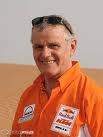
Hans Trunkenpolz
Hans Trunkenpolz Jr. was motorcycling royalty. In the 1930s his father founded the KTM motorcycle company, KTM standing for Kraftfahrzeuge Trunkenpolz Mattighofen (Mattighofen, Austria being the site of his small metal-working factory). In 1954, KTM began producing motorcycles, and never stopped. Hans Jr. would grow up working all aspects of the factory, and eventually he would guide the company from a small Europe-based manufacturer to a global entity. He dedicated his life to the company and motorcycling in general, before retiring in December of 2008. Late this past summer, Trunkenpolz suffered a heart attack during a half-marathon in Bavaria. The man they called "Trupo" was 65 years old.
- - -
Olga Kevelos was Great Britain’s leading lady motorcyclist at one time. She was also the only woman ever to win gold medals in the International Six Days Trial (now Enduro). During the Second World War she volunteered to support the British Navy, and afterward she met a man who and ended up with a boyfriend who rode motorcycles. Olga started riding a bike herself and soon found herself sponsored by the James Motorcycle Company. Within three years, she won her first gold medal, riding a Norton 500 at the event in Wales. That earned her the national spotlight. Olga continued to race off-road until 1970, riding everything from British bikes to Jawa/CZ motorcycles. She was 85 years old when she died on October 28.
Here is a link to the UK Telegraph article, which was sent to me by Christopher Andre.
http://www.telegraph.co.uk/news/obituaries/sport-obituaries/6664072/Olga-Kevelos.html
- - -
In a world of bombastic daredevils, where “going big” meant being known, Mike Cinqmars was the quiet one. He was a decent rider who veered off and up into the sky as an early leader in the free-riding movement. He was one of then ten contestants of the original X Games FMX at San Francisco, and he might have won had a precocious 15-year-old named Travis Pastrana not decided to launch his motorcycle into San Francisco Bay. That silver medal was maybe the highlight Cinqmars’ contest career, but he gained a following for the smooth tricks he did in videos. On the bike he was the antithesis the better known Seth Enslow, like comparing Kevin Windham to Jo Jo Keller. “Textbook” would have been the word to describe Cinq’s riding style, but the sport was so still new when he was riding that the book was yet to be written. Then he crashed.
After Cinqmars broke his back in a fall from some three and a half stories up, his career basically ended. It was downhill from there. He was not paralyzed, but he was in pain. Early on the morning of December 11 his sister Cassey found him in bed, unresponsive. He was pronounced dead a short time later. The causes are still unknown, though the catalyst of his problems with depression can be traced back to the crash and the pain he had to live with from it. “There was nothing he could do in the industry,” Cassey Fisher, his sister, told a newspaper reporter. “He couldn’t ride again and he was struggling and he was down and out. He struggled with the fact that he was this rising star and suddenly he couldn’t ride anymore.” Mike Cinqmars was 31.
- - -
Gusty Schlegel was not a rider, but her husband was. He was also an astute businessman and race promoter who was involved with countless successful events: dirt track, motocross (the old Delta Trans-AMA track), supercross (he was the co-promoter of Pontiac) and amateur racing (he was the original co-promoter of Loretta Lynn’s). So Gusty learned to love motorcycles by osmosis, often times on the back of Paul’s big street cruiser as he rode off on far-gone journeys like Ohio to Florida and back, or even out across the top of the United States to Canada. But mostly she stayed near their home in Toledo, raising their two children Kim and Billy. Paul, who also owned a bike shop, is still a motorcycle man through and through; she was the wife who let him ride as far and as often as his wanted. She passed away this summer after a bout with cancer.
- - -

Colin Swanepoel
Colin Swanepoel was a staple to the American-South African motocross community for many years, pushing the sport in his country as it developed such fine young riders as Greg Albertyn, Grant Langston and Tyla Rattray emerge as world champions. Colin had a cheery voice, a heavy Afrikaans accent, and a catalog of hilarious jokes in his mind that would draw from in nearly every bench racing session, filling the room with laughter.
Colin’s life ended with an apparent heart attack last Friday afternoon. He was 59 years old. “My dad was a true lover of the sport of motocross,” his son Damyn wrote. “He was the best motocross dad and MX groupie there ever was. I am so proud to say he was my dad.”
- - -
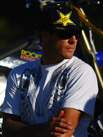
Bronte Holland
Bronte Holland was born on the 15th of February, 1987, in Victoria, Australia. Throughout his young life had become known as one of Australia’s fastest young racers. As he turned pro during late 2005, early 2006, his blistering speed and determination saw him become one of the fastest guys on our national Pro Lites tour – he was one of the youngest riders in the pack but was looked upon as becoming one of Australia’s future stars to tackle America and the world, yet he suffered a career-ending spinal injury in early 2007 whilst practicing, cutting short the dreams he held onto his whole life. Being the fighter that he is, the friendly country kid began a series of coaching days and opened a motocross techniques school that was widely successful in his state of Victoria, and he still attended races and was still widely involved in the industry, and had set his goals on being able to walk again. Tragically, he passed away unexpectedly last week, and the entire Australian MX scene is mourning the loss of a true inspiration and dedicated, fast racer who had his career taken away from underneath him.
- - -

Oscar Diaz
- - -

Kat Spann
- - -

Stephan Mace
Army Specialist Mace was killed in action near Kamdesh, northeast Afghanistan, along with seven other fellow soldiers, when several hundred Taliban fighters armed with automatic rifles and rocket-propelled grenades attacked and nearly overran Combat Outpost Keating, according to the U.S. military. He was buried with full military honors in Arlington National Cemetery. Stephan Mace was 21.
The AHRMA North Atlantic division is dedicating its 2010 season to this brave, young, fallen soldier. “We are also going to produce a decal for our bikes, or perhaps helmet to honor him,” said his fellow rider Ed Day. “We should all remember, and thank, the men and women in the armed forces for their constant sacrifices for us.”
- - -

Jeremy Lusk
Soon the original rule-breakers — Lusk’s cohorts in the Metal Mulisha — helped form the AFMXA (American Freestyle Motocross Association) to try to improve their own safety, and the summer’s X Games seemed to have a dark cloud over it, as the jumpers in the Big Trick contest crashed out with alarming frequency. Even by the end of the year, the crash was on everyone’s minds: It was the only motorcycle-related event to make ESPN The Magazine’s 100 Biggest Stories of 2009 (it as #42).
The effects of Jeremy Lusk’s death can be seen in the actions of event promoters, as Feld has stepped away from promoting who-will-go-bigger contests in favor of a slick, choreographed show called Nuclear Cowboyz. The Dew Action Sports Tour has trimmed back its contests as well. The idea of seeing another rider laying motionless at the base of a ramp, on live television, is not something anyone wants to ever see again.
- - -
I will forever hold a debt of gratitude to Bob Lenk. In February of 1993 my friend Todd Hicks and I were on a week-long road trip, going from the Atlanta SX to the Gainesville outdoor national opener. The morning after the SX, we the way we stopped at a national enduro I was covering for Cycle News. That’s where I saw Bob, the one-man Motoworld TV camera crew, trying to interview Randy Hawkins after the race by holding the camera on his right shoulder and also a microphone stretched out from his left. I listened for a moment and then said, “Bob, here, let me hold the mic for you.” He thanked and stepped back to a better angle of Hawkins, and I proceeded to ask Hawkins a few questions, mic in one hand, tape recorder in the other, while Lenk kept his camera on. I did a few more for him before Todd and I continued our adventure
Three months later I got a phone call from a man named Dennis Torres. He told me he was shooting the upcoming weekend’s Southwick National and wanted to know if I could fill in as the pit reporter. I told him I was the wrong guy, because I had never done such a thing. He said, “Yes you have, Bob Lenk gave me your tape from that enduro in Georgia.” It was Bob who brought my name up, told Torres I could get the job, and just like that I was a television analyst for ESPN, and it was from that high-profile platform I was able to get I was able to get a little newspaper called Racer X off the ground.
Bob Lenk was always on the beat, whether he was doing his early gig as a Cycle News reporter, or shooting for Lou Seals’ seminal TV show Motoworld, hustling to get the shots, the words, and the joy of motorcycling. He put in endless hours lugging those big TV cameras around. He was the picture of health, but for one small caveat: He was a heavy smoker. Bob Lenk succumbed to esophogal cancer last Friday morning.
- - -

Mike Traynor
- - -
Troy Blake was a promising rider from Arizona who got his shot at the top in the early eighties, parlaying a solid minicycle career into a shot at a factory job as soon as he turned pro. Tanner Krahenbuhl was an amateur prospect from California who was 16 years old, hoping to find himself some kind of shot at making it to the next level. Unfortunately, Blake could not find the right program for himself once he joined a Yamaha factory team that included such motocross talent as Bob “Hurricane” Hannah, Broc Glover, Mike Bell and more. He would soon quit following the pro tour and went into the motorcycle dealership business with his family, staying near the sport until an illness ended his life prematurely a few months ago. As for Krahenbuhl, we’ll never know what might have come of his racing dreams; his life ended tragically when the motorhome he was riding in lost its brakes as it come down the steep decline from the Powder Mountain Motocross race in Utah in late August and crashed into a rocky outcrop. Tanner Krahenbuhl was 16 years old.
- - -

Larry Miller
A dedicated philanthropist—Utah Governor Jon Huntsman said, “We all have been made better by [Larry’s] extraordinary life”—Miller in 1995 formed Larry H. Miller Charities, whose mission is to “give back to our communities by focusing our united service and corporate giving on youth and children with an emphasis on health and education.” He passed away in February, just a couple of months before his track hosted its second World SBK round.
- - -

John Gallagher
John Sr. raced more GNCC races than anyone ever, starting all the way back in the mid-1970s and never skipping a season. He raced at every venue the GNCC Series ever visited—an accomplishment only he can claim. He won the 40+ GNCC Title past his 50th birthday, and won the 50+ crown past age 60. His will to win never faded. A few times each year, he would call me on the phone to state his case on something—why his class should start on the front row, why we should start a 60+ class for ATV riders, whatever. He was a tough, stubborn old racer and really quite fun to spar with. He wasn’t afraid to tell it as he saw it, and when he did, you respected it, because he has seen more than most.
Two weeks ago, we battled on the phone for 45 minutes as he tried to put plans together for 2010. Four days later, he arrived at the job site (he was a landscaper) on a Monday, and an errant tree limb fell and struck him on the head, killing him. His funeral was overrun with GNCC well-wishers, memorabilia and trophies. Nine-Time GNCC Champion Bill Balance—the all-time winner—read scripture during the service for the all-time rider. John Gallagher Sr. was a great family man, and GNCC Racing was his life.
- - -

Dave Chase
Dave’s passing was a shocker. He came down with the H1N1 flu virus, and when he went to have that checked out, they found something more sinister: leukemia. Dave Chase will be sorely missed but never forgotten. He was 47 years old
- - -

Hans Trunkenpolz
- - -
Olga Kevelos was Great Britain’s leading lady motorcyclist at one time. She was also the only woman ever to win gold medals in the International Six Days Trial (now Enduro). During the Second World War she volunteered to support the British Navy, and afterward she met a man who and ended up with a boyfriend who rode motorcycles. Olga started riding a bike herself and soon found herself sponsored by the James Motorcycle Company. Within three years, she won her first gold medal, riding a Norton 500 at the event in Wales. That earned her the national spotlight. Olga continued to race off-road until 1970, riding everything from British bikes to Jawa/CZ motorcycles. She was 85 years old when she died on October 28.
Here is a link to the UK Telegraph article, which was sent to me by Christopher Andre.
http://www.telegraph.co.uk/news/obituaries/sport-obituaries/6664072/Olga-Kevelos.html
- - -
In a world of bombastic daredevils, where “going big” meant being known, Mike Cinqmars was the quiet one. He was a decent rider who veered off and up into the sky as an early leader in the free-riding movement. He was one of then ten contestants of the original X Games FMX at San Francisco, and he might have won had a precocious 15-year-old named Travis Pastrana not decided to launch his motorcycle into San Francisco Bay. That silver medal was maybe the highlight Cinqmars’ contest career, but he gained a following for the smooth tricks he did in videos. On the bike he was the antithesis the better known Seth Enslow, like comparing Kevin Windham to Jo Jo Keller. “Textbook” would have been the word to describe Cinq’s riding style, but the sport was so still new when he was riding that the book was yet to be written. Then he crashed.
After Cinqmars broke his back in a fall from some three and a half stories up, his career basically ended. It was downhill from there. He was not paralyzed, but he was in pain. Early on the morning of December 11 his sister Cassey found him in bed, unresponsive. He was pronounced dead a short time later. The causes are still unknown, though the catalyst of his problems with depression can be traced back to the crash and the pain he had to live with from it. “There was nothing he could do in the industry,” Cassey Fisher, his sister, told a newspaper reporter. “He couldn’t ride again and he was struggling and he was down and out. He struggled with the fact that he was this rising star and suddenly he couldn’t ride anymore.” Mike Cinqmars was 31.
- - -
Gusty Schlegel was not a rider, but her husband was. He was also an astute businessman and race promoter who was involved with countless successful events: dirt track, motocross (the old Delta Trans-AMA track), supercross (he was the co-promoter of Pontiac) and amateur racing (he was the original co-promoter of Loretta Lynn’s). So Gusty learned to love motorcycles by osmosis, often times on the back of Paul’s big street cruiser as he rode off on far-gone journeys like Ohio to Florida and back, or even out across the top of the United States to Canada. But mostly she stayed near their home in Toledo, raising their two children Kim and Billy. Paul, who also owned a bike shop, is still a motorcycle man through and through; she was the wife who let him ride as far and as often as his wanted. She passed away this summer after a bout with cancer.
- - -

Colin Swanepoel
Colin’s life ended with an apparent heart attack last Friday afternoon. He was 59 years old. “My dad was a true lover of the sport of motocross,” his son Damyn wrote. “He was the best motocross dad and MX groupie there ever was. I am so proud to say he was my dad.”
- - -

Bronte Holland



